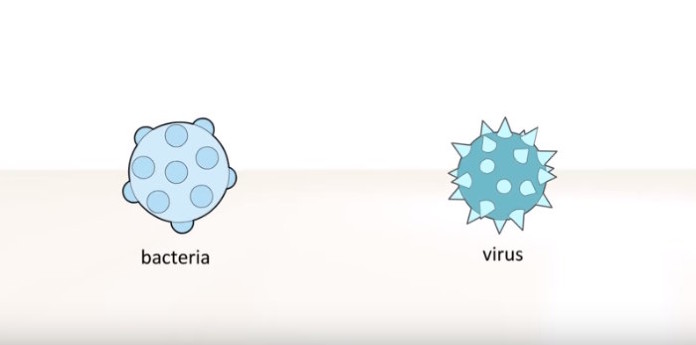Publishing in Science Translational Medicine, researchers at Stanford University School of Medicine have announced that they have made a breakthrough in their aim to create a diagnostic test that is able indicate when a patient is suffering from a bacterial infection that can be treated by antibiotics. The video below describes the differences between a bacterial and a viral infection.
Antibiotics have been tremendously beneficial to public health, but now their overuse could threaten us with deadly pathogens that won’t respond to antibiotics. Doctors are now encouraged to only prescribe antibiotics when they are absolutely necessary, and not just when patients request them or for minor illnesses whose cause is unknown. Unfortunately though, there is not an easy way to tell if such illnesses are due to a virus or bacterial infection.
“A lot of times you can’t really tell what kind of infection someone has,” explains Timothy Sweeney, MD, PhD, the lead author of the paper who is an engineering research associate at the Stanford Institute for Immunity, Transplantation and Infection. “If someone comes into the clinic, a bacterial or a viral infection often look exactly the same.”
“The idea to look for a diagnostic test came from our previous paper in Immunity last year,” says Assistant Professor of Medicine Purvesh Khatri, PhD, the study’s senior author. “In that paper, we found a common response by the human immune system to multiple viruses that is distinct from that for bacterial infections. We wondered whether we could exploit that difference to improve the diagnosis of bacterial or viral infections. But we needed a gene signature consisting of far fewer genes for the test to be clinically useful.”
To start developing a diagnostic assay, the investigative team utilized publicly available gene expression data from patients to identify genes whose expression is altered during an infection in the hopes of seeing patterns that distinguish whether an infection is viral or bacterial.
They found seven genes with changed expression, and created their test. It’s expected to be a huge improvement over tests that analyze the expression of hundreds of genes, the researchers posit. With so few genes involved, the new test will be accurate while also being cheaper and faster, they explain.
This new gene-expression assay for identifying bacterial infections will face two hurdles before it would be made available to the clinic. It must first be rigorously tested in a clinical setting. The data and test results for this work have until now all come from online digital data sets of gene expression from patients with different types of infections and not from current patients. The scientists validated the seven-gene test using blood samples from 96 seriously ill children, and found that the test was accurate. But secondly, it must be validated in large numbers of patient blood samples.
The test will also need to be fused with a device that is able to produce a result in about an hour. The preliminary version of the test takes too long for those who are critically ill or have sepsis – four to six hours.
In someone who is obviously very ill, explains Sweeney, giving antibiotics would be the answer. However, patients often have early-stage bacterial infections and doctors don’t realize the patient is in serious danger. The gene expression test would remove doubt in only minutes, thus allowing medical practitioners to prescribe necessary antibiotics faster, saving lives while reducing the amount of unnecessarily prescribed drugs.
Source: LabRoots











